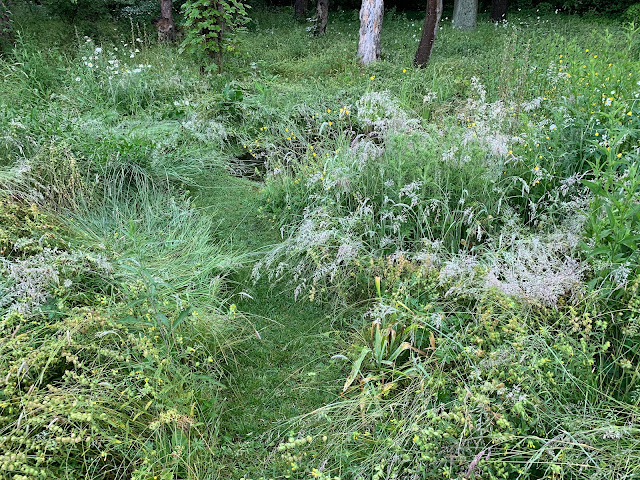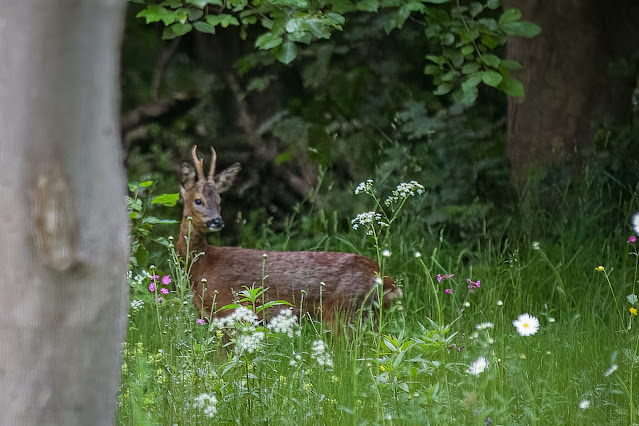Otters live in a world it is difficult for us to imagine. Apart from the cubs being with their mother, otters live mostly solitary lives. Their sense of smell is very acute and they communicate by leaving spraint, urine or anal jelly to advertise their presence and condition. The cubs are already doing the same. There are popular scent-marking spots in front of my cameras, at the water's edge and up the bank. In the first video the mother led the cubs up the bank, sniffing as they went. When they returned the mother left a message, as did one of the cubs a little lower down. Three hours later the dog otter turned up to sniff the messages intently before leaving his own. (The flickering light is caused by a failing battery in another camera in the tree on the right.) Another two hours later, in daylight, mother and one cub went by, sniffing and scent-marking again.
It is hard enough at the best of times to decide where to put the trail cameras but once the lake freezes it becomes even more hit-and-miss. This next video is a case of what might have been, with most of the action frustratingly out of shot. It starts at the end of the video above - the female otter came down the bank with one cub, both looking wonderfully warm and fluffy in the cold. The mother then caught a fish in a hole in the ice, just out of view. She gave it to the cub to eat, just after the second one came rushing down. It's a bit fragmented but I have pieced together what I can of the action.
It is interesting that one cub is already becoming very independent, often lagging behind. If my calculations are correct the cubs are about 29 weeks old in these videos so they still have a lot to learn and will be with their mother for some while yet. I'll keep trying to point the cameras in the right directions.








































































